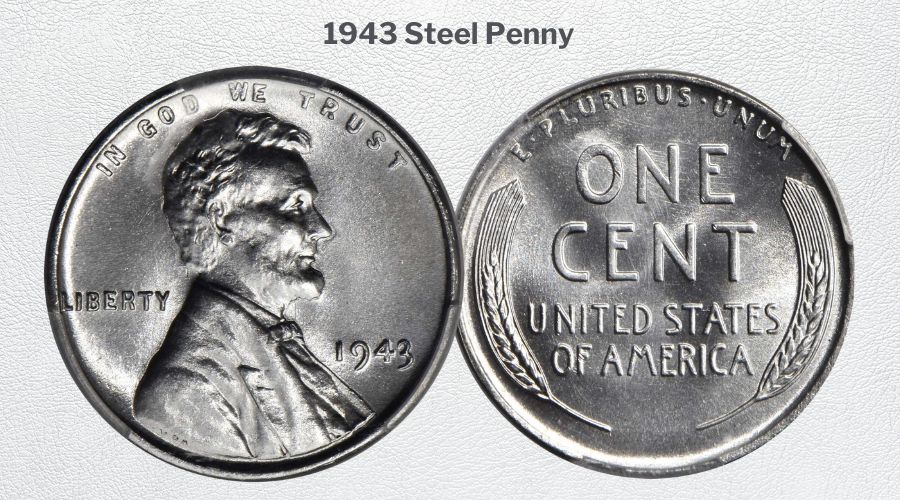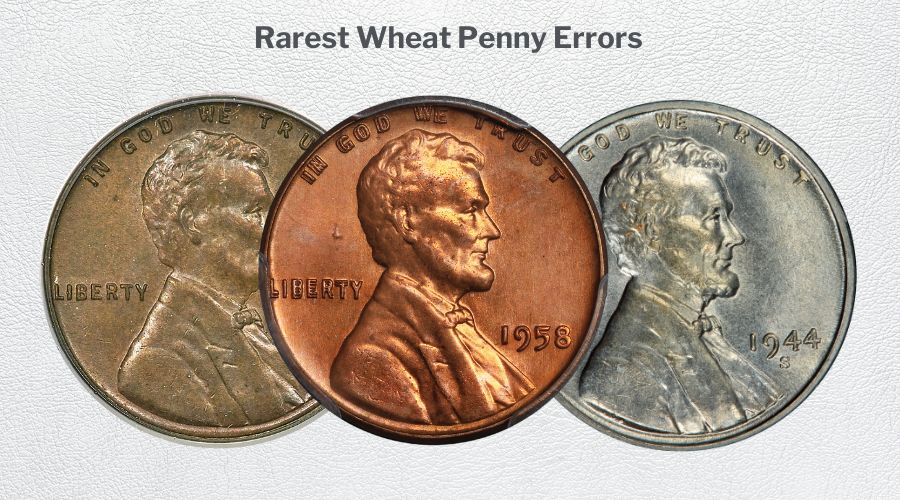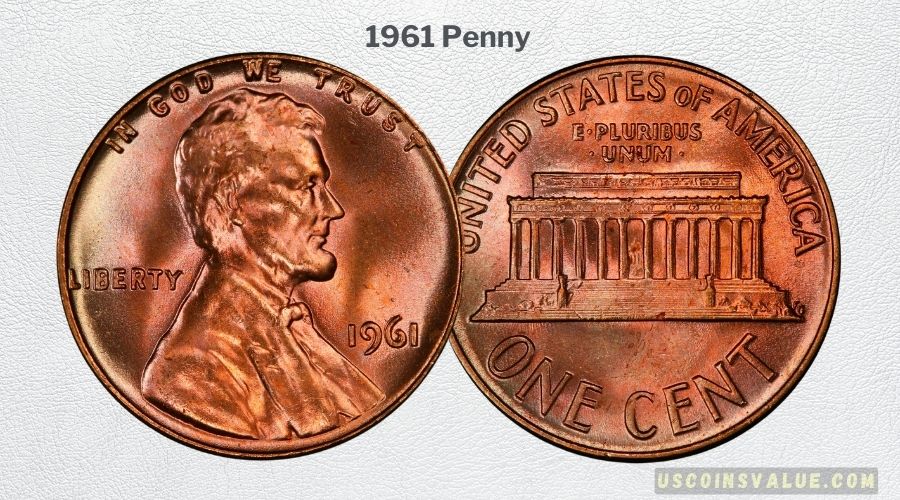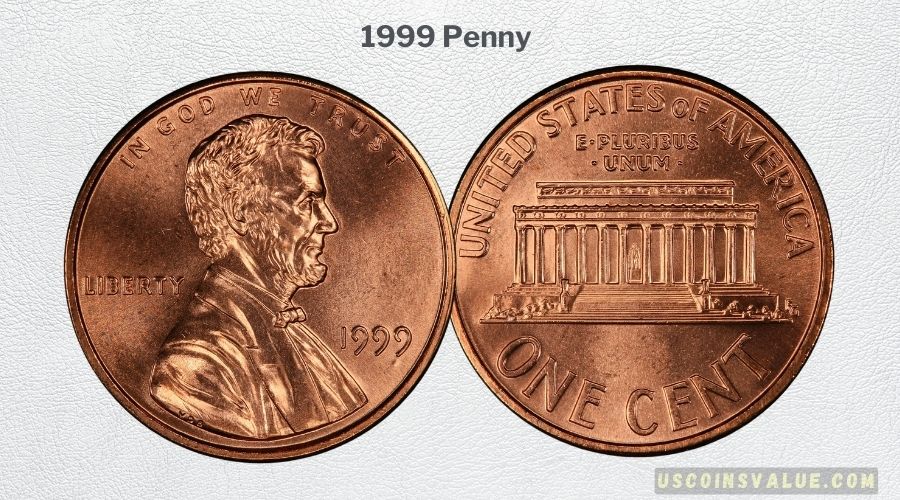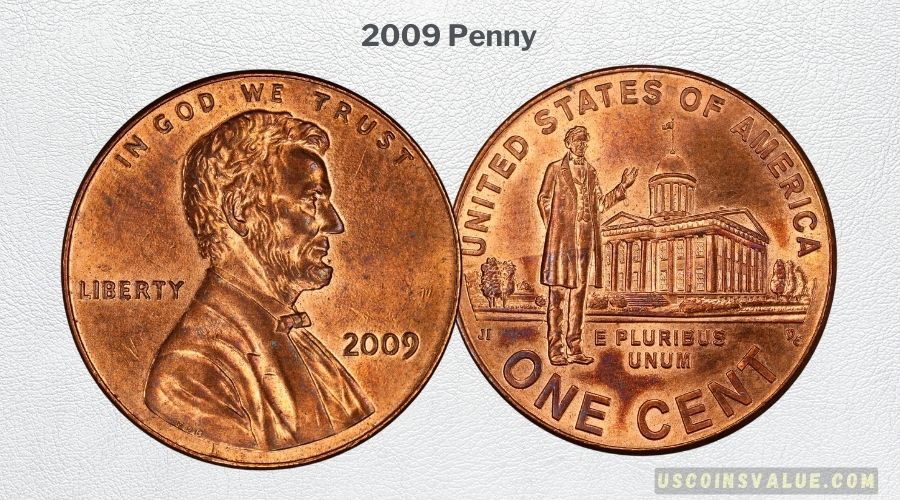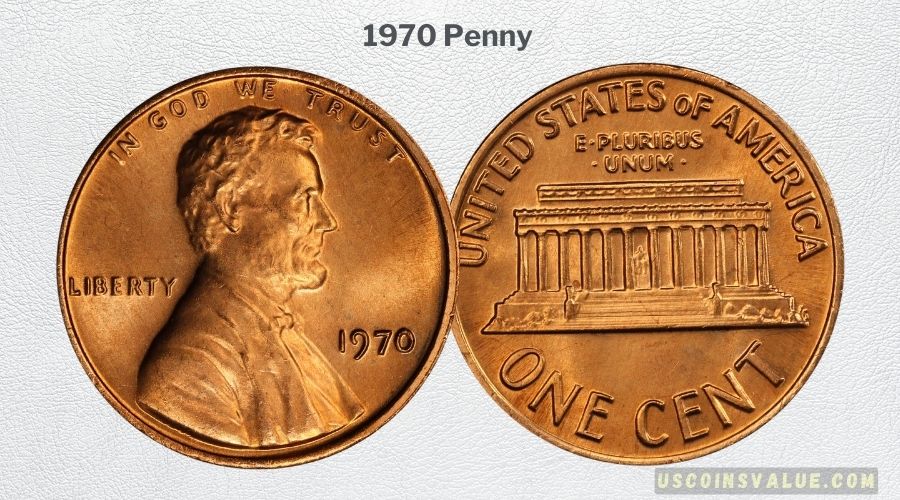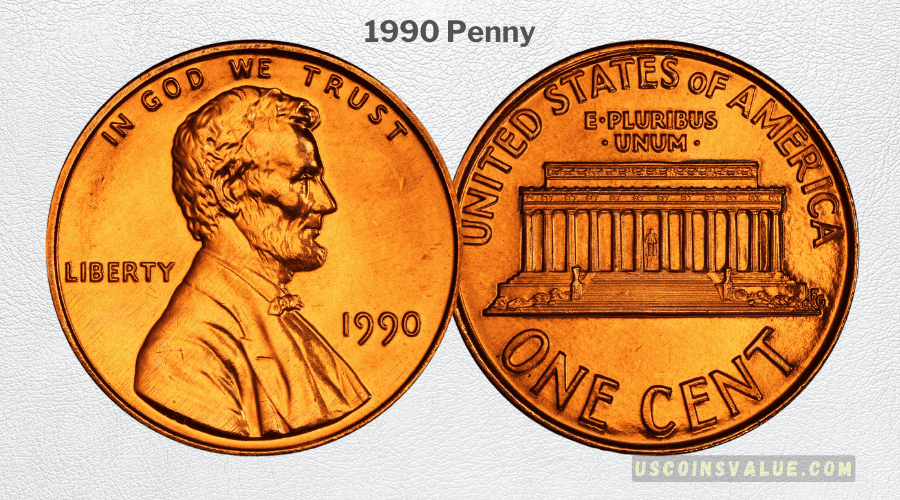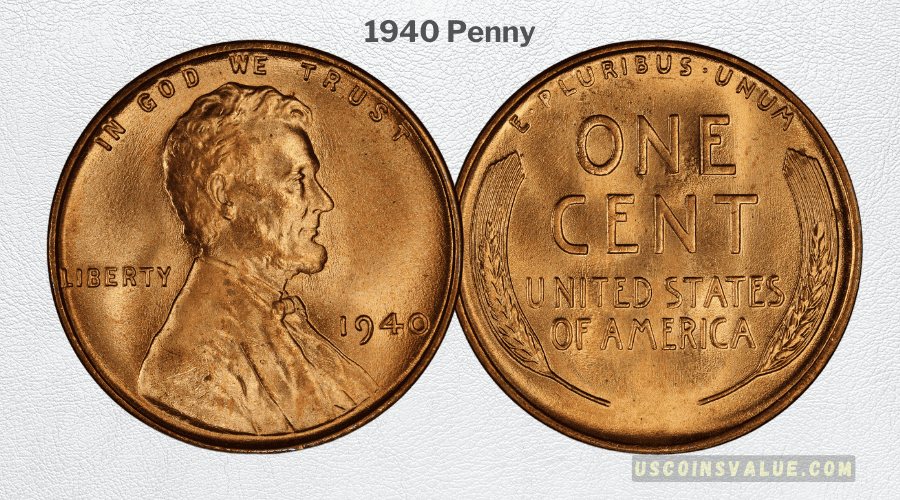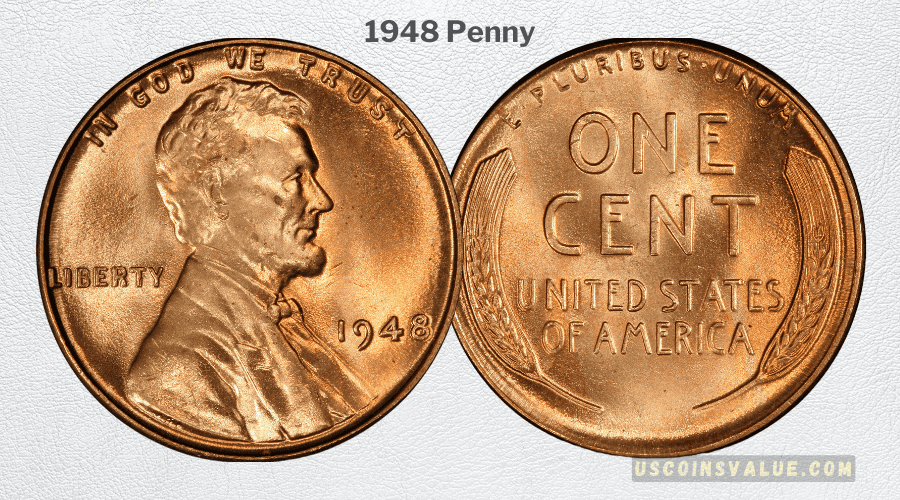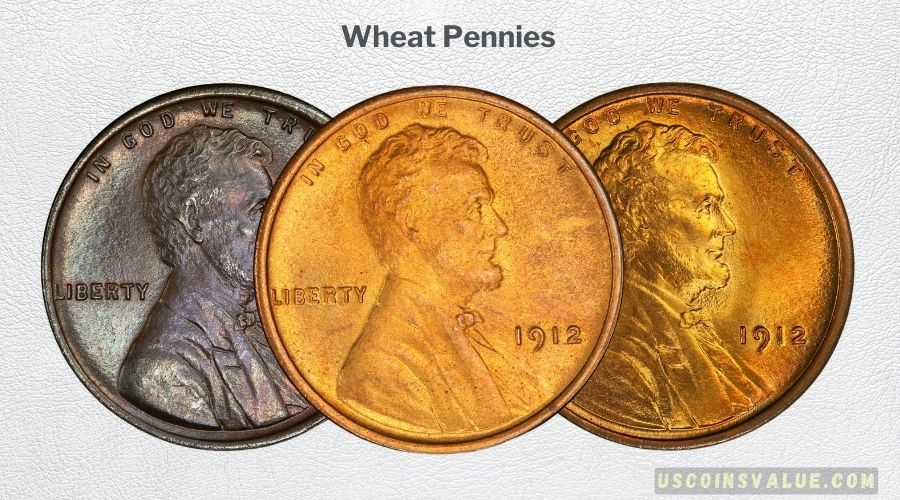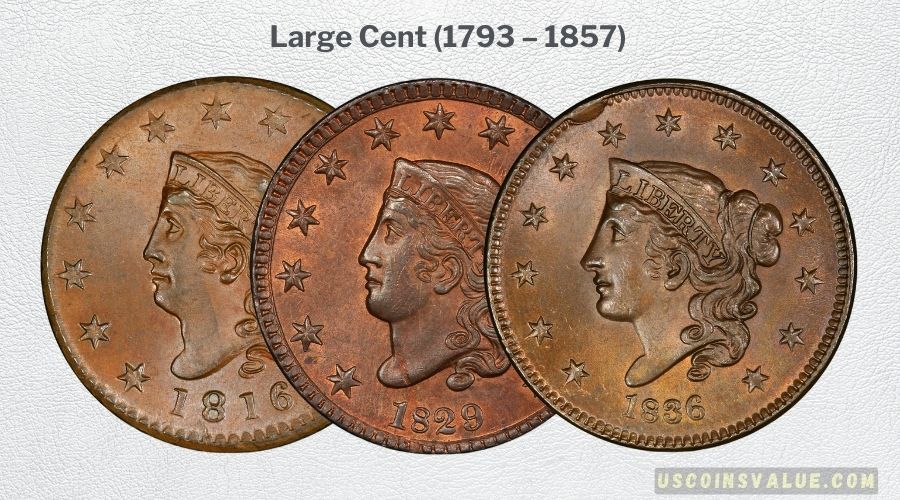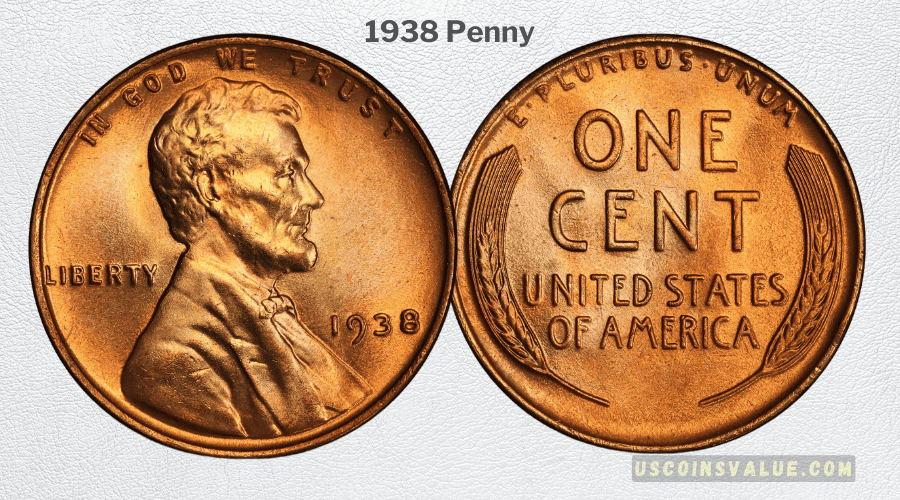The penny (also known as the cent) is the most common and lowest face value United States coin. It was first put into circulation in 1793, authorized by the Coinage Act of 1792, making the cent among the first coins ever made by the current United States Mint.
Here is the complete list of all the types of pennies minted in the United States since its inception:
- Flowing Hair Large Cent (1793)
- Liberty Cap Large Cent (1793 – 1796)
- Draped Bust Large Cent (1796 – 1807)
- Classic Head Large Cent (1808 – 1814)
- Coronet Head Large Cent (1816 – 1839)
- Braided Hair Large Cent (1839 – 1857)
- Flying Eagle Cent (1856 – 1858)
- Indian Cent (1859 – 1909)
- Lincoln Cent (Wheat Reverse): 1909 – 1958
- Lincoln Cent (Wheat Reverse (Steel)): 1943
- Lincoln Cent (Memorial Reverse (Copper)): 1959 – 1982
- Lincoln Cent (Memorial Reverse (Zinc)): 1982 – 2008
- Lincoln Bicentennial Cents: 2009
- Lincoln Shield Reverse: 2010 to Date
History of Pennies
The Large Cents (1793 – 1857) were the first in the series, with an average diameter of 11/8 inch (28.57mm). By the 1840s, their large size had become unpopular, prompting the creation of the Small Cents (1856 to Date) with a nominal diameter of 0.75 inches (19.05 mm).
The penny’s design details have also evolved throughout history, featuring various motifs, inscriptions, and symbols.
The first cents featured Liberty’s image on the obverse, a design that changed over the years to the current iconic Lincoln obverse. The reverse design received the most changes, from a ring of chains to a wreath reverse, wheat ears, and finally, the current shield reverse.
Initially made of copper, the penny’s composition also shifted, reflecting technological advancements and economic realities. Today, it is primarily composed of zinc with a copper coating.
The pennies currently in circulation are the Lincoln Shield Reverse Cents (2010 to Date), consisting of a 19.5 mm diameter, weighing 2.50 grams, and a composition of a 97.5% zinc core and 2.5% copper plating.
Due to inflation, the pennies have little purchasing power. Initially, each penny was worth one-hundredth of a dollar ($0.01), which remained relatively consistent for over a century.
However, the penny’s purchasing power gradually declined. By the 1980s, the penny’s production cost exceeded its face value, raising concerns about its continued viability.
Despite its decline in purchasing value, the penny has received increased attention in the collector’s market.
Penny Value Today
The most valuable pennies with the highest recorded sales include the 1943-D Lincoln Wheat Penny (Bronze) worth $2,000,000, the 1944-S Lincoln Wheat Penny (Steel) worth more than $1,000,000, and the 1943-S Lincoln Wheat Penny (Bronze) valued at more than $500,000.
At US Coins Value, we provide a comprehensive overview of these pennies from various eras. We evaluate their current value and offer collectors guidance on identifying unique and valuable cents.
Read our extensive list of US penny articles to dive deeper into each type.

